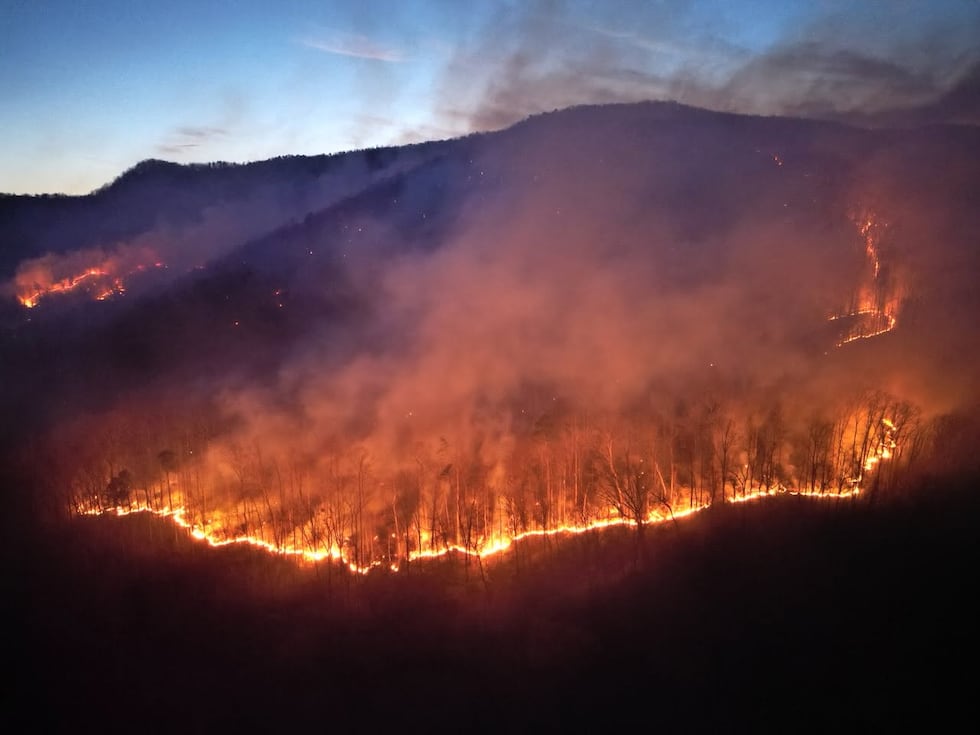Nearly 90% of North Carolina counties at high fire danger levels as wildfires rage
89 of 100 counties were at “high” or “very high” fire danger levels on March 25
CHARLOTTE, N.C. (WBTV) - Fire danger is still at a high level across North Carolina, even after some places got a bit of rain Monday.
According to the state’s daily fire danger monitor, 89 of the 100 counties in North Carolina are at a “high” or “very high” risk levels on Tuesday, March 25. Conditions will only worsen throughout the week, with all 100 counties within those levels Friday and Saturday.
The heightened fire risk comes as the Carolinas have gotten little rain in recent weeks, and strong winds threaten to spread any fires that start.
As of the latest update on March 18, a national drought monitor showed that nearly 60% of North Carolina was in some level of drought. For the 40% that was not in drought, almost all areas were said to have been “abnormally dry.”
National Weather Service records showed that from March 1-24, rainfall totals were about an inch lower than normal in several of North Carolina’s biggest cities.
In addition to low rainfall and gusty winds, low humidity has also contributed to the increased fire danger.
Because of the wind and low humidity, the National Weather Service issued a red flag warning for more than two dozen counties across western North and South Carolina and eastern Georgia. Red flag warnings are issued to alert fire managers that conditions are “highly unfavorable” for prescribed burns.
A burn ban went into effect in both Carolinas on Friday, March 21.
North and South Carolina have each dealt with recent wildfires, with both states having thousands of acres burned up.
Polk County fires in North Carolina
Three wildfires have been burning in Polk County in western North Carolina since last week. The first fire was sparked on March 19, and by the following day, the two others had started.
The fires were named the Black Cove, Deep Woods and Fish Hook wildfires. The Black Cove and Deep Woods fires have combined to consume more than 5,500 acres, and both were zero-percent contained as of Monday, March 24. The Fish Hook fire was a much more modest 199 acres in size and was 69% contained.
Officials have ordered a series of evacuations in recent days. Updates on those evacuation orders can be found here.
For anyone who needs a place to go, a shelter has been set up at the Polk County Senior Center on Carmel Lane in Columbus.
A separate fire in Burke County burned nearly 150 acres and 500 vehicles but has since been controlled.

Wildfires in South Carolina
More than three weeks after the Covington Drive fire was started in the Myrtle Beach area, firefighters in South Carolina are still trying to put it out. The blaze has burned more than 2,000 acres since it first started, but is now 80% contained, according to data from the South Carolina Forestry Commission.
A woman was arrested on March 6 after she allegedly let a backyard fire get out of hand, igniting the Covington Drive wildfire.
The Covington Drive is not the only fire that firefighters are battling in South Carolina, though. At least two more wildfires -- the Persimmon Ridge and Table Rock fires -- were burning as of March 25.
The Table Rock fire in Pickens County had grown over 1,100 acres in size, while the Persimmon Ridge blaze had burned more than 300 acres.
The South Carolina Forestry Commission has an online tool where people can track the latest information on the state’s fires.
Tips for safe burning
While officials have made it clear that now is not the time for burning, there are some things people can do to mitigate the risk whenever conditions improve.
According to the state Department of Agriculture, backyard burning and careless debris burning are the leading causes of wildfires in North Carolina.
To prevent fires from getting out of hand, the department has several tips to promote safe outdoor burning, which include:
- Don’t burn on dry, windy days
- Have a water source, shovel and steel rake nearby
- Set up a fire line
- Build campfires away from overhanging branches, stumps, logs, dry grass and leaves
- Never leave a fire unattended
- Check for any current local or state burn bans
- Secure a valid burn permit
More on fire safety can be found here.
Also Read: Polk County wildfire spreads into neighboring county: What to know
Copyright 2025 WBTV. All rights reserved.













